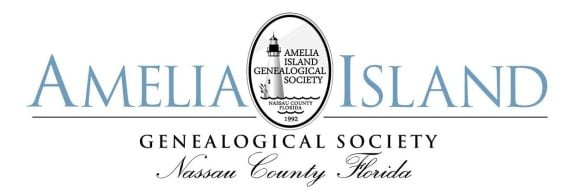I was tasked this year with coming up with only 5 books that every genealogist needs to read or own. This wasn’t as easy as it sounds, because each genealogist has different needs based on their family’s ethnicity, location, etc. As a result, these books are intentionally general in nature and often, specific to US research. There are over 1600 books in the Amelia Island Genealogical Society collection available to you, and more than 100 of them feature guides and assistance in your research. If you have a specific location or subject matter, then there is a good chance we have a book to help guide your research.
The source
A guidebook to American genealogy / edited by Loretto Dennis Szucs & Sandra Hargreaves Luebking.
When Ancestry published the first edition of The Source in 1984, it quickly became a standard reference in the field of genealogy and family history. That same year, it received the coveted ‘Best Reference’ award from the American Library Association. The 1997 edition, built upon the foundations laid down by its predecessor, sold more than 100,000 copies. A poll of librarians placed The Source, sometimes referred to as ‘the genealogist’s bible,’ at the top of the ‘Top 10 Genealogy Books’ for the wealth of information it offers to beginning and experienced genealogists
Check out from the Fernandina Branch Library
https://nassaureads.polarislibrary.com/search/title.aspx?ctx=1.1033.0.0.1&pos=2&cn=56600
This book is also freely available online.
https://wiki.rootsweb.com/wiki/index.php/The_Source:_A_Guidebook_to_American_Genealogy
Red Book
American State, County, and Town Sources / edited by Alice Eichholz.
Red Book is designed to help family historians learn where to find information about their ancestors by taking an approach focused on localities. It is an expansive guide to the most useful resources in each of the fifty United States and the District of Columbia. Organized by state, the content easily directs the user to information-rich resources. Major highlights of the content are the county resources published in table format for each state. Information in these tables often include county name, when the county was formed, which counties the new county was created from, and dates for when each county started recording information such as birth, marriage, and death records or land, probate and court records. Each state also has a county, town, or parish map.
Check out from the Fernandina Branch Library
https://nassaureads.polarislibrary.com/search/title.aspx?ctx=1.1033.0.0.1&pos=1&cn=35637
This book is also freely available online.
https://wiki.rootsweb.com/wiki/index.php/Red_Book:_American_State,_County,_and_Town_Sources
Evidence explained
Citing history sources from artifacts to cyberspace / Elizabeth Shown Mills.
Evidence Explained is the definitive guide to the citation and analysis of historical sources. It begins with a simple question: Why do we invest so much of our energy into the citation of sources? Followed immediately by the intriguing answer: Because all sources are not created equal. As a citation guide, Evidence Explained is built on this simple question and answer. According to the author, there are no historical resources we can trust at face value. Records simply offer evidence, and their assertions may or may not be true. To decide what actually happened, we must understand those records. To analyze that evidence and judge what to believe, we also need particular facts about those records. Thus, Evidence Explained has two principal uses: it provides citation models for most historical sources, especially original materials not covered by classic citation guides such as The Chicago Manual of Style. Beyond that, it can help us understand each type of record and identify each in such detail that we and our readers will know not only where to go to find our source, but, equally important, the nature of that source so that the evidence can be better interpreted and the accuracy of our conclusions properly appraised.
Check out from the Fernandina Branch Library
https://nassaureads.polarislibrary.com/search/title.aspx?ctx=1.1033.0.0.1&pos=1&cn=42692
Elements of Genealogical Analysis
Robert Charles Anderson, FASG
This handbook presents a step-by-step process for solving genealogical problems — a methodology thirty years in the making. Developed by Anderson and perfected through his work on the Great Migration Study Project, this systematic approach considers each source, each record, and each possible linkage before making a genealogical conclusion… Examples of actual research problems and continuing case studies, accompanied by easy-to-follow diagrams, walk you through the steps of effective genealogical analysis.
Check out from the Fernandina Branch Library
https://nassaureads.polarislibrary.com/search/title.aspx?ctx=1.1033.0.0.1&pos=1&cn=99727
The Family Tree guide to DNA testing and genetic genealogy
Blaine T. Bettinger.
This plain-English guide, newly revised and expanded, is a one-stop resource on genetic genealogy for family historians. Inside, you’ll learn what DNA tests are available, with up-to-date pros and cons of the major testing companies (including AncestryDNA) and advice on choosing the right test to answer your specific questions. For those who’ve already taken DNA tests, this guide will demystify and explain how to interpret DNA test results, including how to understand ethnicity estimates and haplogroup designations, navigate suggested cousin matches, and use third-party tools like GEDmatch to further analyze data.
Check out from the Fernandina Branch Library
https://nassaureads.polarislibrary.com/search/title.aspx?ctx=1.1033.0.0.1&pos=2&cn=106552
